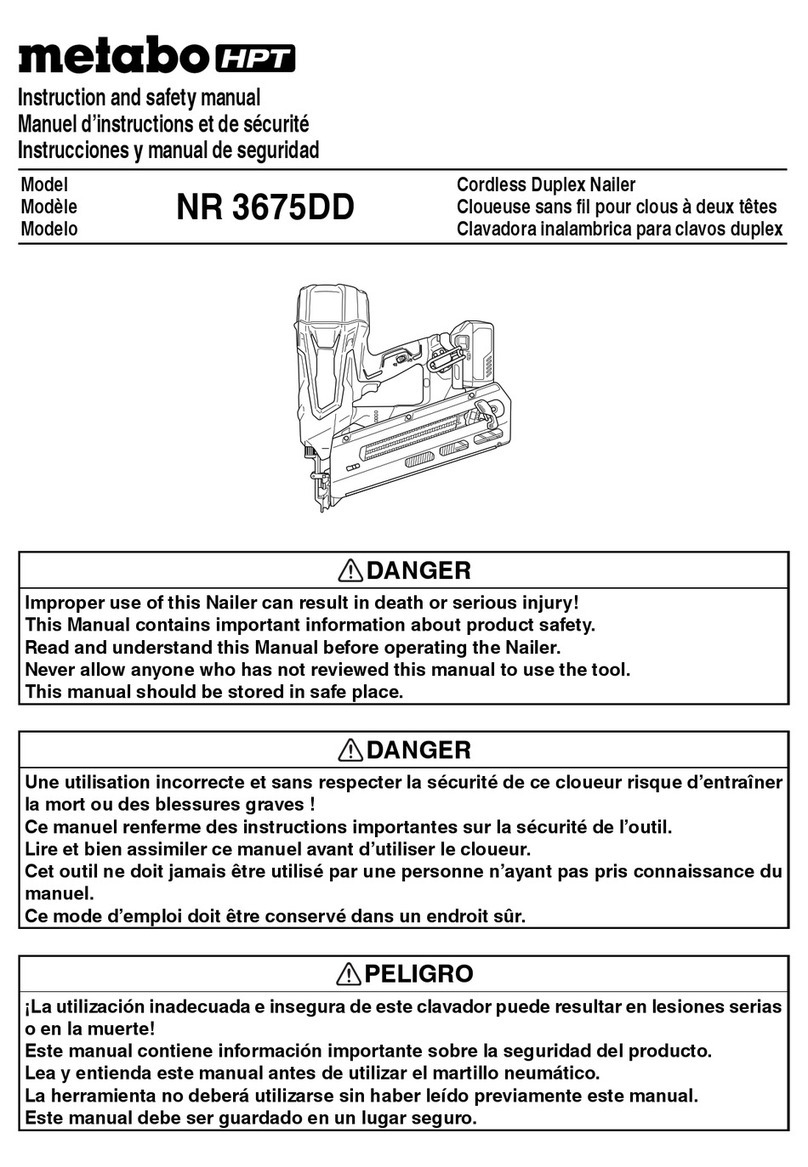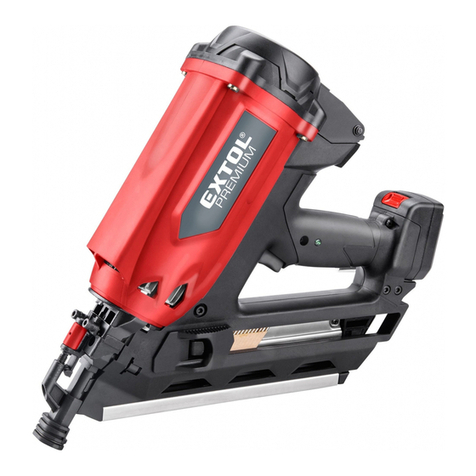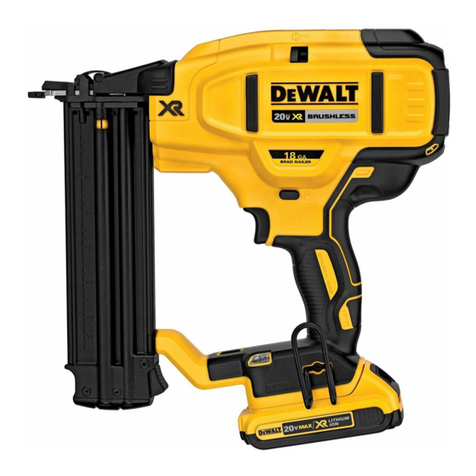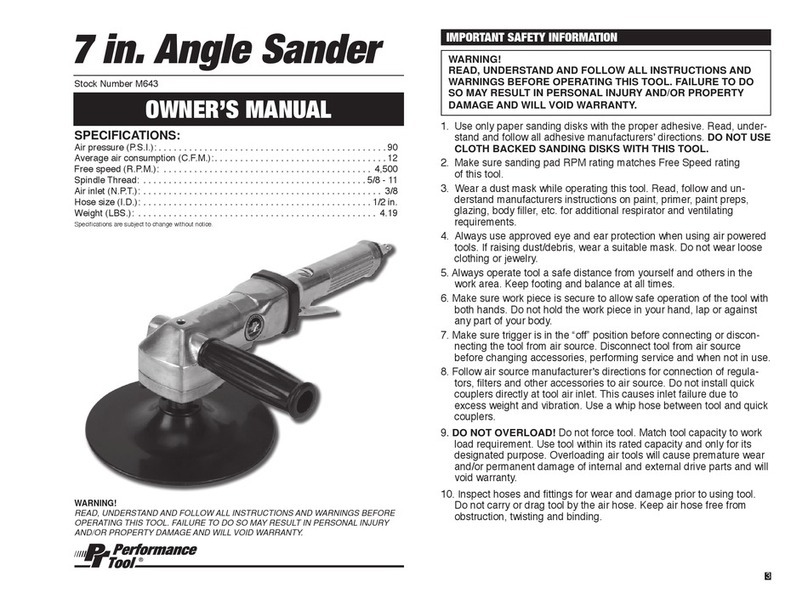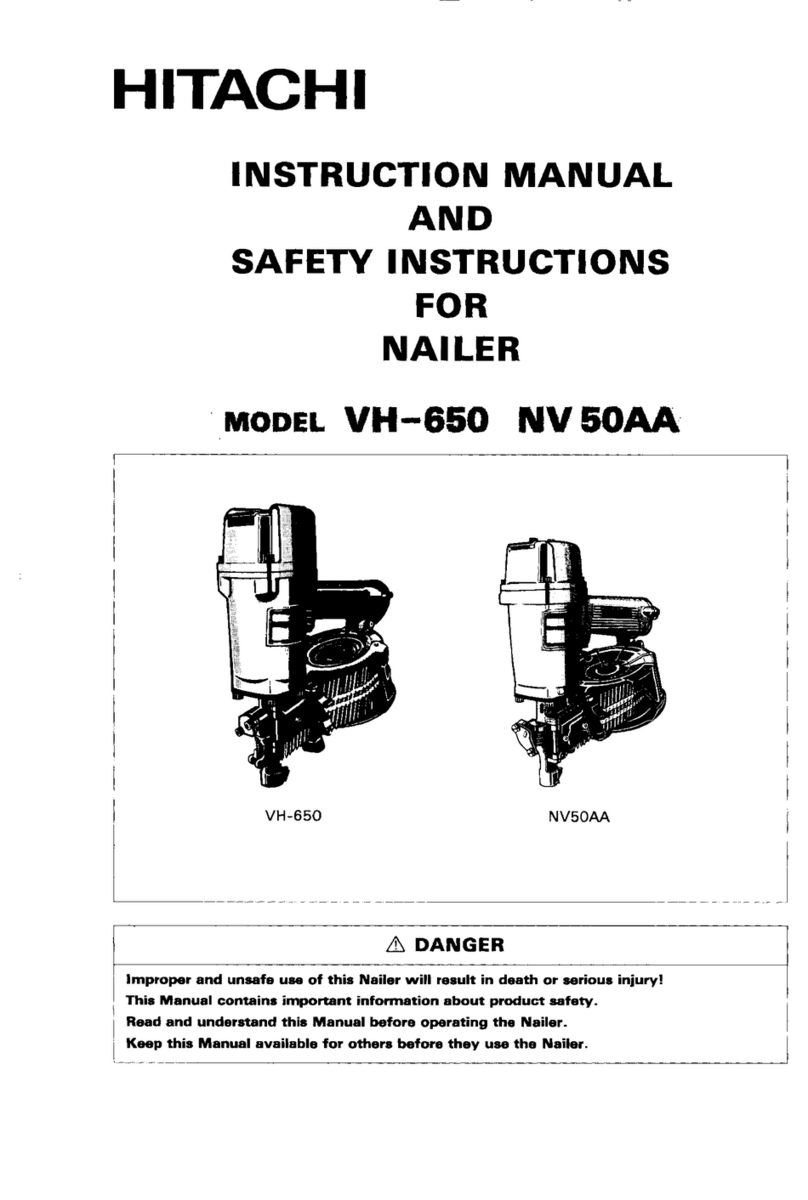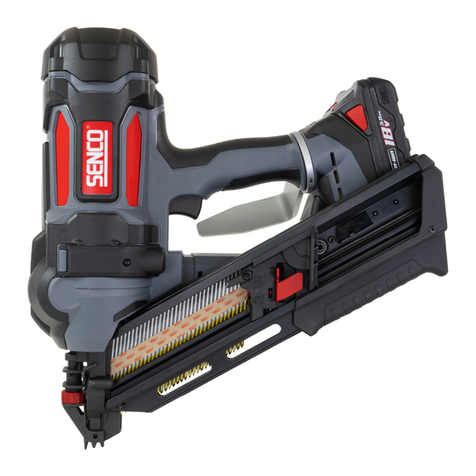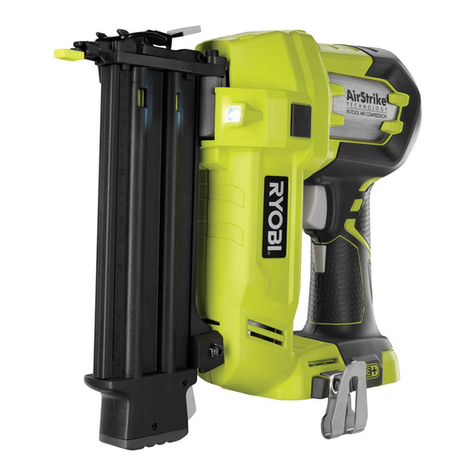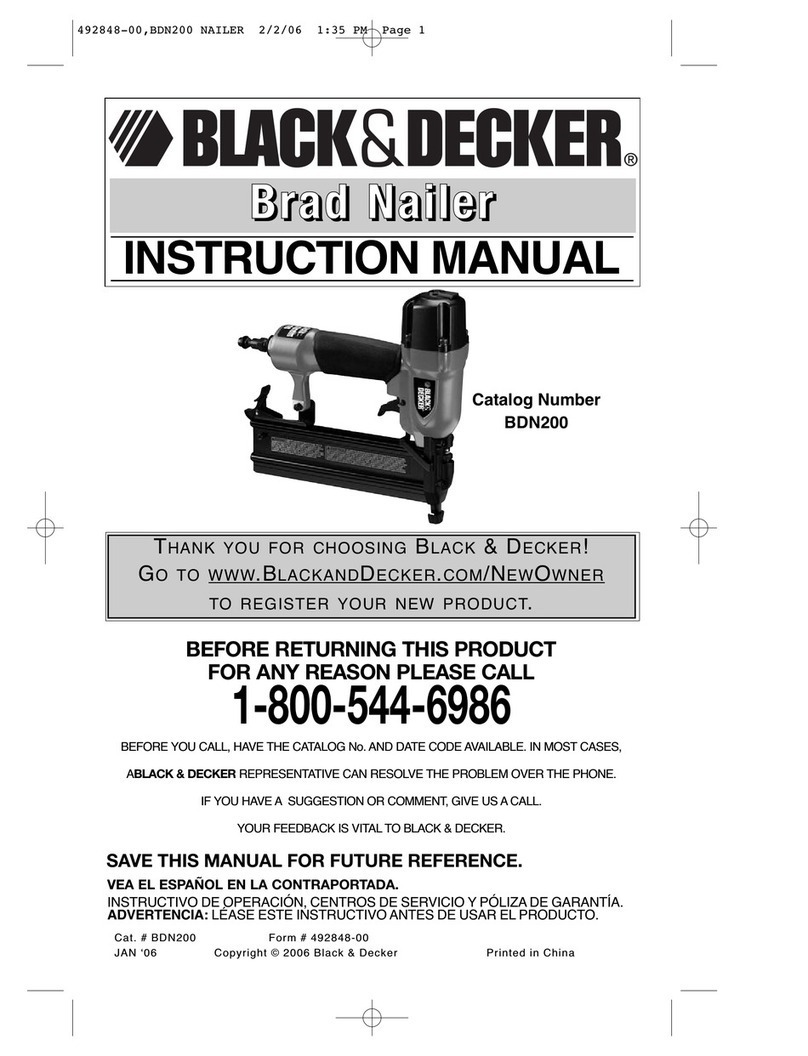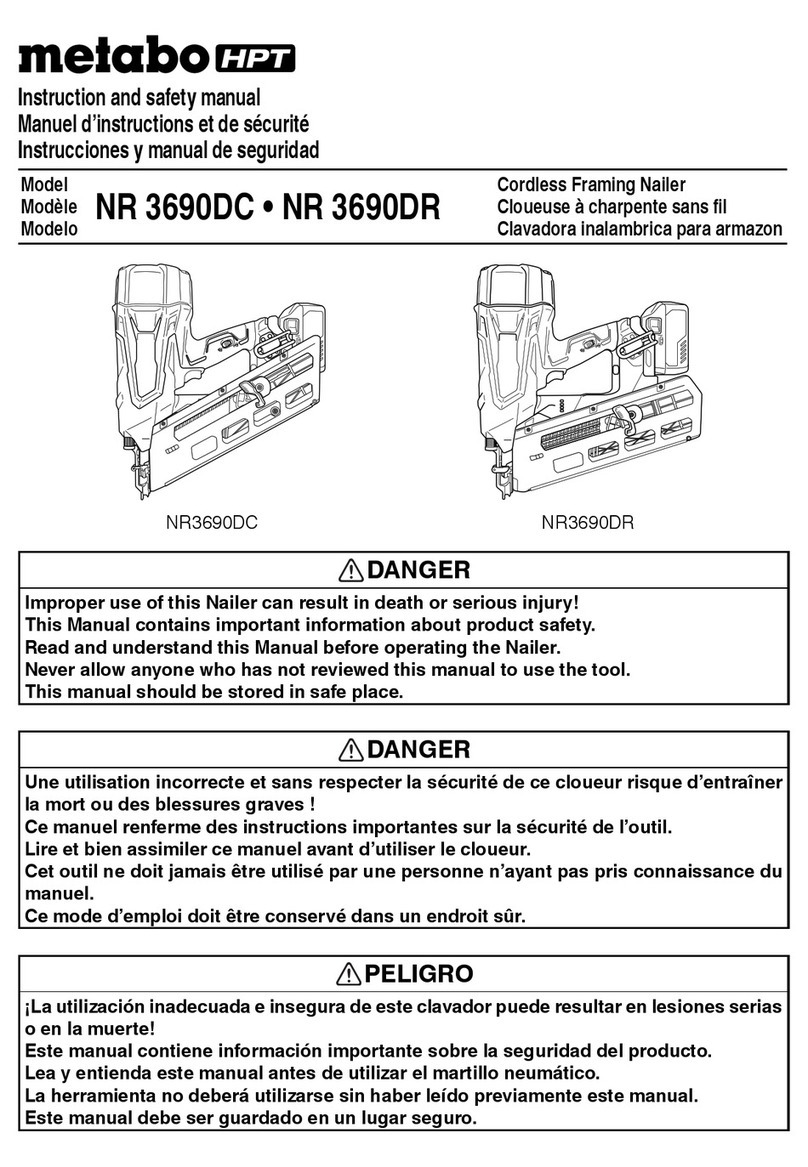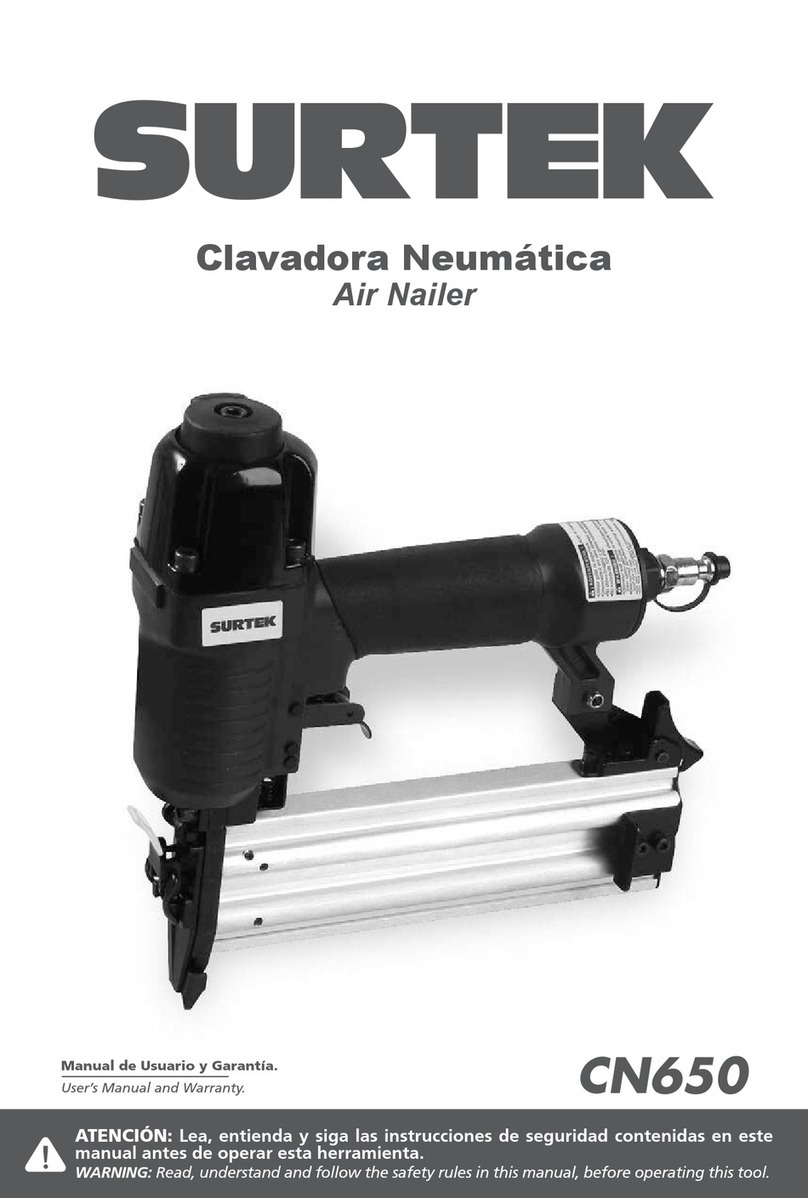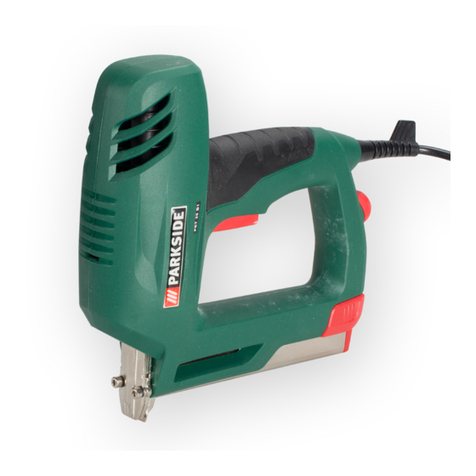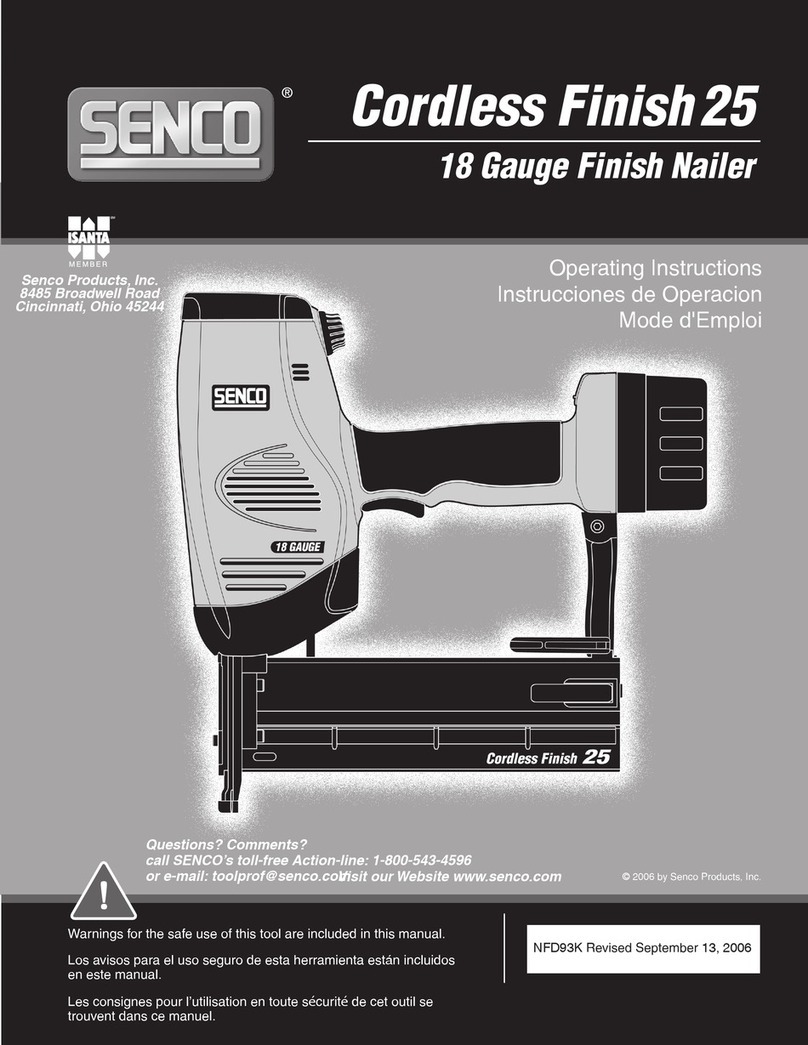
!
WARNING: When using electrical and pneumatic equipment basic safety
precautions should always be followed to reduce the risk of personal injury.
Please familiarize yourself with the following information to prevent damage to
your equipment and injury to the operator, property damage, or death.
We strongly recommend that this tool not be modified and /or used for any
application other than that for which it was designed. If you have any questions
relative to its application, do not use the tool until you have contacted us.
SAFETY GLASSES1. To prevent eye injuries, the tool operator and all
persons in the work area must wear ANSI Z87.1 approved safety glasses
with permanently attached, rigid side shields.
EAR PROTECTION2. Wear ear protection to prevent possible hearing loss.
USE CLEAN, DRY, REGULATED, COMPRESSED AIR3. at 70 to 110 PSI.
DO NOT CONNECT TOOL4. to pressure which potentially exceeds 200 PSI.
AIR HOSE:5. Only use hose that is rated for a minimum working pressure of
150 PSI or 150% of the maximum system pressure, whichever is greater.
NEVER USE OXYGEN, CARBON DIOXIDE, COMBUSTIBLE GASES6. or
any other bottled gas as a power source for this tool. Explosion and serious
personal injury could result.
COUPLINGS7. : Connect tool to air supply hose with a 1/4" NPT coupling that
removes all pressure from the tool when the coupling is disconnnected.
DISCONNECT TOOL FROM AIR SUPPLY8. hose before doing any
disassembly, maintenance, clearing a jammmed fastener, leaving the work
area, moving the tool to another location, or handing the tool to another
person.
NEVER USE A TOOL9. that is leaking air, has missing or damaged parts, or
requires repair. Make sure all screws and caps are securely tightened.
CHECK FOR DAMAGED PARTS.10. Never use a tool if safety, trigger, or
spring are inoperable, missing or damaged. Do not alter or remove safety,
trigger, or springs. Make daily inspections for the free movement of trigger
and safety mechanism.
REPLACEMENT PARTS.11. When servicing, use only identical replacement
parts and fasteners recommended by us.
CONNECT TOOL TO AIR SUPPLY BEFORE12. loading fasteners to prevent
fasteners from firing during connection. The fastener driving mechanism
may cycle when the tool is connected to the air supply.
ALWAYS ASSUME THE TOOL CONTAINS FASTENERS.13. Keep it pointed
away from yourself and others at all times.
DO NOT LOAD FASTENERS14. with trigger or safety depressed. The tool
may unintentionally fire a fastener.
DO NOT DEPRESS THE TRIGGER15. when not driving fasteners. Never
carry tool with finger on trigger mechanism: tool may fire an unwanted
fastener.
DO NOT OVERREACH.16. Keep proper footing and balance at all times. Do
not reach over or across running tools.
FIRE FASTENERS INTO WORK SURFACE ONLY17. and never into
materials too hard to penetrate.
GRIP TOOL FIRMLY18. to maintain control while allowing the tool to recoil
away from the work surface as the fastener is driven. If the safety is allowed
IMPORTANT SAFETY INSTRUCTIONS
2
to recontact the work surface before the trigger is released, an unwanted
fastener will be fired.
DO NOT DRIVE FASTENERS19. on top of other fasteners, or with the tool at
too steep an angle: the fasteners can ricochet causing personal injury.
DO NOT DRIVE FASTENERS20. too close to the edge of the workpiece.
The workpiece is likely to split, allowing the fasteners to fly free or ricochet
causing personal injury.
READ ALL INSTRUCTIONS BEFORE USING THIS TOOL
